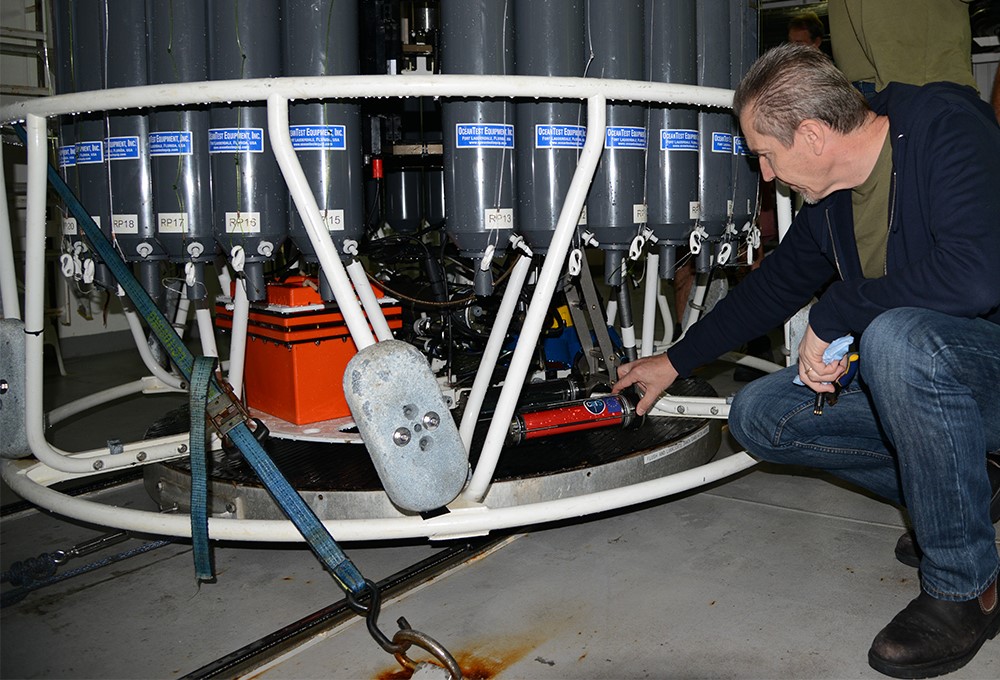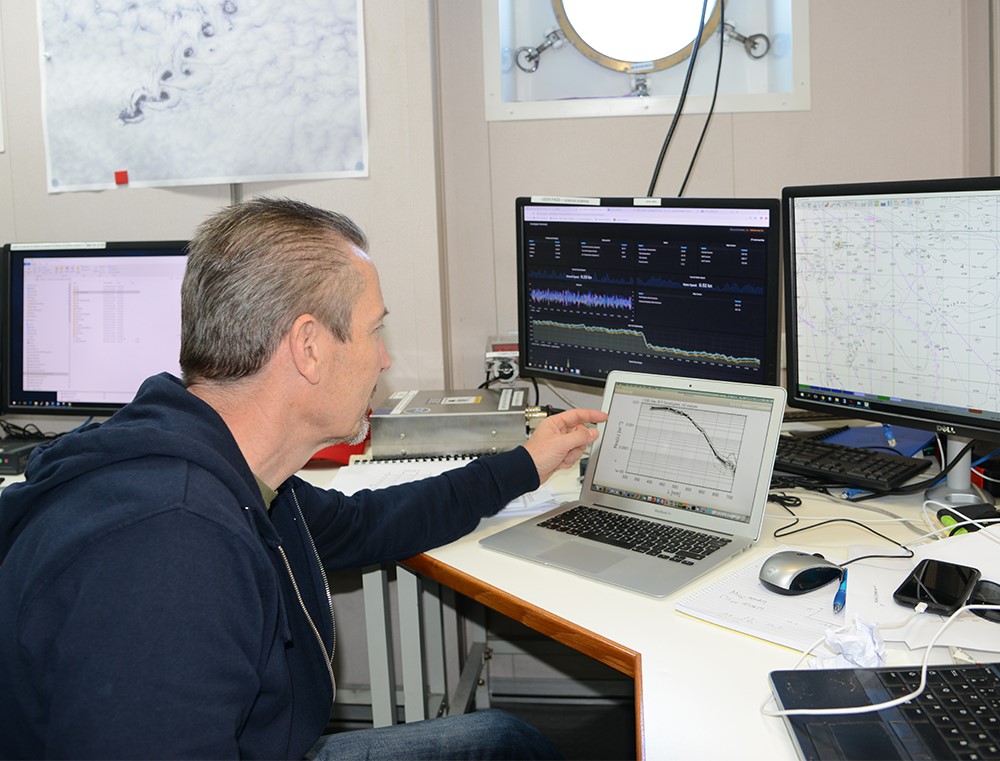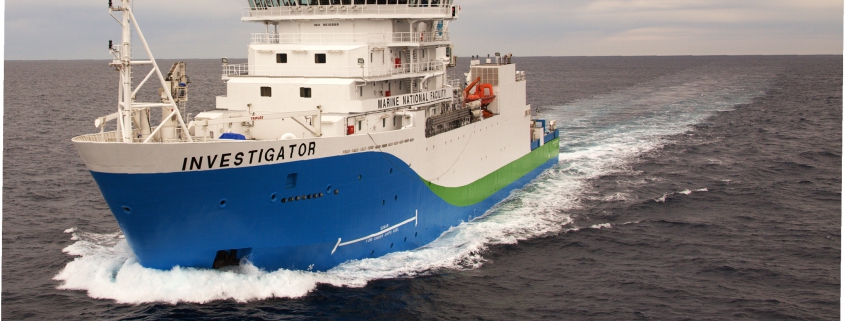Particles and the UVP – One Ten East log
One Ten East Logs from the IIOE-2 voyage aboard RV Investigator will be posted on the WAMSI website during the month long voyage.
We have had some gorgeous distinctively tropical birds recently, a juvenile red-tailed tropicbird and two Golden Bosun birds!
– Captain Micheline Jenner
The RV Investigator is currently undertaking oceanographic research along the 110°E meridian off Western Australia as part of the second International Indian Ocean Expedition. The voyage is led by Professor Lynnath Beckley of Murdoch University and the research is supported by a grant of sea time on RV Investigator from the CSIRO Marine National Facility.
| Date: June 05, 2019 | Time: 1200 AWST |
| Latitude: 11.5°S | Longitude: 110°E |
| Wind direction: ENE | Wind speed: 9 knots |
| Swell direction: SE 2 m | Depth: 4527 m |
| Air temperature: 27°C | Sea temperature: 28°C |
Notes: Last station on the line! We made it! The RV Investigator has followed in the wake of the HMAS Diamantina.
Particles and the UVP
By David Antoine
A key descriptor of marine ecosystems is a particle size distribution, which is expressed as the number of particles or volume of particles in the water column. The particle size distribution is one of the parameters that determines bulk optical properties of a water mass. Various techniques exist to determine the particle size distribution and for large particles greater than100 microns, we are using the “Under Water Video Profiler” (UVP) on board the RV Investigator.
This instrument captures images of the particles so that one can identify what is present. The technique also allows derivation of the export flux of particles to the deep ocean.

In the CTD room, Prof David Antoine (Curtin University) checks the UVP (two red cylinders) at the base of the CTD. Photo: Micheline Jenner AM.

Prof David Antoine (Curtin University) processes data from the UVP. Photo: Micheline Jenner AM.

